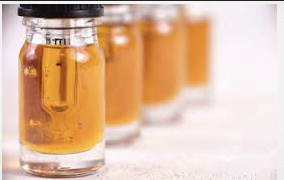Growing weed can be a fun and rewarding hobby. But, in order to get the best results, you need to have a solid grasp of the basics, and that includes learning about the different stages of a plants life and how to care for them. The flowering stage is a critical time for cannabis plants because this is when they begin to produce bud. It is make or break at this stage, whether you are going to have a good or bad, one simple mistake can tip the odds towards the latter. In this article, we will discuss what happens during the flowering stage, the do’s and don’ts, the importance of cannabis sexing, and how best take care of your plants.
What Happens During Flowering Stage?
The flowering stage is when cannabis plants begin to produce buds. This typically occurs around 8-10 weeks after the plant has been germinated, depending on the strain and growing conditions. During this time, the plant will transition from a vegetative state to a reproductive state, and will require different care and attention.
One of the most important changes that occur during the flowering stage is the development of male and female plants. Female plants produce the buds that are used for smoking or making edibles, while male plants produce pollen that is used to fertilize female plants. This is why it’s important to sex your plants early on in the growing process, so that you can remove any males before they have a chance to fertilize your females.
Another important change that occurs during the flowering stage is the plant’s nutrient needs. During the vegetative stage, cannabis plants require higher levels of nitrogen, as this helps them grow tall and bushy. However, during the flowering stage, the plant’s focus shifts from growth to bud production, and they require higher levels of phosphorus and potassium. This is because these nutrients help the plant produce larger, denser buds with a higher THC content.
The Importance of Cannabis Sexing
As mentioned earlier, sexing cannabis plants is crucial during the flowering stage. If you have both male and female plants in the same growing space, the males can fertilize the females and reduce the potency of your buds. Additionally, if you plan on breeding your plants, you’ll want to know which ones are male and female so that you can make intentional crosses.
The easiest way to sex your plants is to look for pre-flowers, which typically appear 3-4 weeks after germination. Female plants will have two white hairs protruding from a small, tear-shaped pod, while male plants will have small, round balls that look like grapes. Once you’ve identified the males, it’s important to remove them from your growing space as soon as possible to prevent them from pollinating your females.
How Much Nutrients During Flowering Stage?
As mentioned earlier, cannabis plants require different levels of nutrients during the flowering stage than they do during the vegetative stage. During this time, you’ll want to reduce the amount of nitrogen in your fertilizer and increase the levels of phosphorus and potassium. Generally speaking, you’ll want to use a fertilizer with an NPK ratio of 5-10-10 or 10-20-20 during the flowering stage.
It’s important to note that every strain is different, and some may require more or less nutrients than others. Additionally, the size of your plants, the type of growing medium you’re using, and the environmental conditions can all affect your plants’ nutrient needs. To ensure that your plants are getting the right amount of nutrients, it’s important to monitor them closely and adjust your fertilizer accordingly.
Should I water more during flowering?
Watering is an essential aspect of cannabis cultivation, and it becomes even more critical during the flowering stage. However, the answer to whether you should water more or not is not straightforward. Overwatering or underwatering during the flowering stage can lead to significant problems like mold and root rot. Therefore, it’s crucial to find the right balance.
During the flowering stage, the plant’s water requirement increases, but it doesn’t mean you should water more frequently. Instead, it’s better to water less often but with more water than to water frequently with small amounts. This will ensure that the roots get enough water and oxygen, which is essential for proper nutrient absorption.
To determine when to water your plants during flowering, it’s helpful to check the soil’s moisture level regularly. You can do this by sticking your finger about an inch into the soil. If it feels dry, it’s time to water. Additionally, it’s a good idea to use a pH meter to check the water’s pH level before watering your plants. Cannabis plants thrive in a slightly acidic environment, so aim for a pH level of 6.0-7.0.
Should I remove fan leaves during the flowering stage?
The answer to this question is controversial among cannabis growers. Fan leaves are the large, flat leaves that grow from the stem and branches of the plant. They play a vital role in photosynthesis, which is the process of converting light energy into food for the plant. During the flowering stage, the plant’s energy goes towards producing buds, and some growers believe that removing the fan leaves can help redirect the plant’s energy towards the buds.
However, it’s important to note that removing too many fan leaves can harm the plant and reduce its overall yield so if you do this it needs to be done carefully and in a controlled fashion. Removing the fan leaves systematically like this is called cannabis defoliation and providing you stick to removing no more than 10% of them in one go, starting with any dry or weak looking leaves it may help to improve yield by diverting energy away from the leaves and to the buds.
How long should the flowering stage take?
The flowering stage typically lasts between 6-12 weeks, depending on the strain and growing conditions. However, it’s important to note that the flowering stage can be extended or shortened depending on several factors, such as the light cycle, temperature, and nutrient levels. Growers who want to maximize yield and potency should pay close attention to their plants and adjust these factors accordingly.
To determine when your plants are ready for harvest, look for the pistils, which are the tiny hair-like structures that grow from the buds. As the plant matures, the pistils will turn from white to orange or red. Additionally, you can use a jeweller’s loupe to examine the trichomes, which are the tiny, resinous glands that contain THC and other cannabinoids. When the trichomes turn from clear to milky or amber, it’s a sign that the buds are ready for harvest.
How do you maximize yield in the flowering stage?
The flowering stage is a critical part of your grow and is when your plants will be packing on lots of bud. To really maximise yield potential you need to make sure your plants are happy and healthy during this stage, to do this follow these basic principles….
Choose the right strain: Some strains are known for their high yield potential, so do your research before selecting your seeds.
Provide proper lighting: During the flowering stage, cannabis plants require a specific light cycle to maximize yield. Most growers use a 12/12 light cycle, which means 12 hours of light and 12 hours of darkness. Make sure your grow lights are providing the right spectrum of light and are positioned at the right distance from the plants.
Maintain proper temperature and humidity: Cannabis plants thrive in a temperature range of 68-77°F (20-25°C) and a humidity range of 40-60%. Maintaining the proper temperature and humidity levels can help prevent mold and other issues that can reduce yield.
Use proper nutrients: During the flowering stage, cannabis plants require different nutrients than during the vegetative stage. Use a high-quality flowering nutrient formula that provides the right balance of nutrients, including phosphorus and potassium, which are essential for flower production.
Prune and train your plants: Pruning and training weed plants for bigger yields using techniques such as topping, LST, fimming and SCROG will increase the yield. LST (low-stress training) involves bending and tying down the branches to create an even canopy and maximize light exposure.
Use CO2 enrichment: Carbon dioxide (CO2) is essential for photosynthesis, and enriching the air with CO2 can increase yield by up to 30%. You can use a CO2 generator or CO2 tank to maintain the proper levels.
Harvest at the right time: Harvesting your plants at the right time is crucial to maximizing yield and potency. Wait until the trichomes have turned milky or amber before harvesting, and avoid harvesting too late when the THC levels begin to degrade.
By following these tips and paying close attention to your plants during the flowering stage, you can maximize yield and produce high-quality buds. Remember, the key to successful cannabis cultivation is patience and attention to detail. With the right care and techniques, you can enjoy a bountiful harvest of potent and flavourful buds.



















